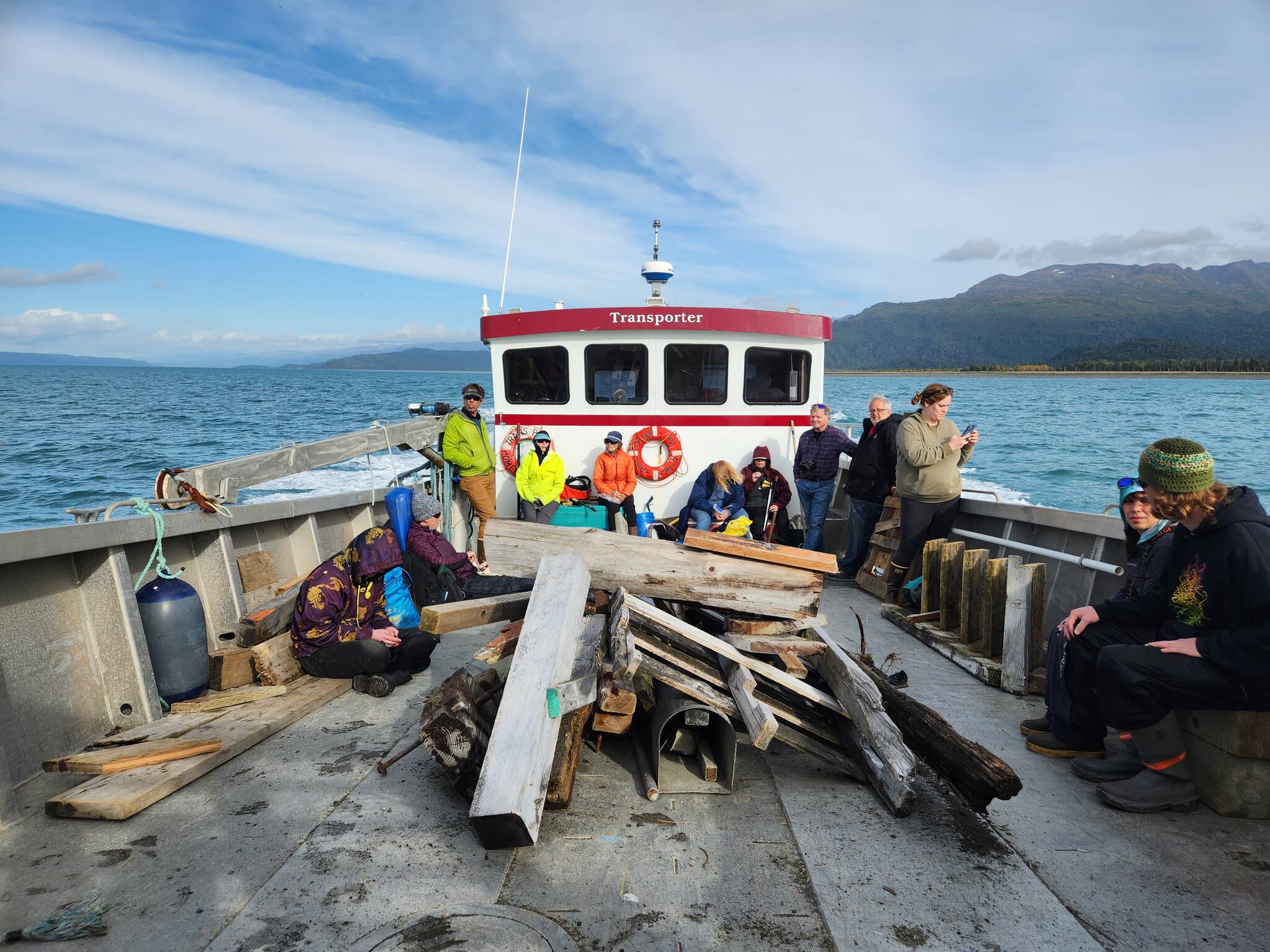The Center for Alaska Coastal Studies has started their 40th annual CoastWalk beach cleanup and monitoring season.
The summer season concluded with closure of the Wynn Nature Center and the Yurt on the Spit on Monday, Sept. 4. CoastWalk will run September through October, though it usually wraps up by mid-October because of weather and temperature.
“Debris could literally be frozen to the ground by the end of October and people don’t really want to be picking up trash that late in the season,” Henry Reiske, marine debris coordinator with CACS, said.
Non-biodegradable items that fall into the ocean such as plastic, foam, metal and glass can disrupt the habitat and food sources for marine organisms and plants.
“By cleaning up the bay and promoting an attitude of conservation and sustainability in the community, we can work together to protect our marine neighbors and help the oceans flourish,” the CACS website said.
There are several ways that people can contribute volunteer effort to this event. Kachemak Bay is divided into 32 zones for cleanup. Zone 1 is near Diamond Creek. Each zone is numbered heading south from there and wrapping around Kachemak Bay to the Fox River Flats, across the Bay and south past Seldovia, Reiske said. The zones vary in length.
“The Spit is divided into six zones but all of Fox River Flats is a zone, because of accessibility and database collection for those more remote areas,” Reiske said.
People can choose to adopt a zone or there are sign-up sheets available at CACS where a person can choose a particular area to contribute to.
“The CoastWalk is a multi-focused effort to capture a snapshot of the Bay, not necessarily just debris cleanup. The data collection component of the event includes observations of plant and animal species that someone might see and what kind of substrate erosion they might observe. They can record that on a data card that is included in a CoastWalk packet that we provide when they sign up for beach zone,” Reiske said.
Volunteers are not obligated to contribute observations to all components of the what the data cards include.
Homer’s CoastWalk database that started in 1984 is the longest sustained data log on beach observations in the state of Alaska, Reiske said.
Some components’ data changed when CoastWalk joined the International Coastal Clean Up program. That gave us a much more formalized marine debris record. Prior to that, there was more focus on creating an awareness of biodiversity and environmental erosion in the Bay and now there is more emphasis on trash cleanup.
Reiske talked about some of the most significant changes he’s noticed.
“Closing the left side of the beach to car traffic at Bishop’s Beach marked a significant change. There’s a really big difference in debris where vehicles can access the beach and where they can’t and that’s probably contributing to the sea stars rebounding on the slough side,” he said.
Kachemak Bay is also an early warning zone for invasive plants.
“The invasives here do have some issues but it’s not atrocious. But, that’s another data collection point we provide in the packet records. It lets people note if they are seeing things like reed canary grass or hawkweed. That way if people do catch a small patch of something like hawkweed we might be able to address it early before it spreads farther,” he said.
Other changes Reiske mentioned related more to the kinds of trash collected at beach sites.
“One really noticeable recent change is a large drop in cigarette butts. Historically, that component of trash has been one of the top and most consistent items on the list,” he said.
Post-COVID, CACS predicted a larger collection of masks and gloves. Those personal protective devices were added to the data card in 2021 and 2022 but the results did not turn out to be much of a change. Another item recently added to the list is gear for e-cigarettes and small marijuana tubes.
At the beginning of the summer 2023, CACS was able to offer a four-day CoastWalk trip to Augustine in Cook Inlet. The trip was funded through Team Seas, a program organized to remove trash from beaches through. A similar trash cleanup has happened with CACS previously three times. But, finding an outside funding source restricts availability to offer cleanups like this annually, Reiske said.
Being part of the International Coastal Clean Up program also allows CACS to share and compare data and findings on an international scale.
One of the largest volunteer groups who contribute to CoastWalk are local school groups.
There is one sign-up zone across the Bay at Grewingk that will have a supported water taxi service that people can sign up for. The water taxi funding is provided by Orca Floating Classroom Tours. All of the sign-up sheets are currently displayed in the main entry room at CACS and people interested in contributing to CoastWalk can sign up there. Data from prior year collections is available on the CACS website at www.akcoastalstudies.org.


